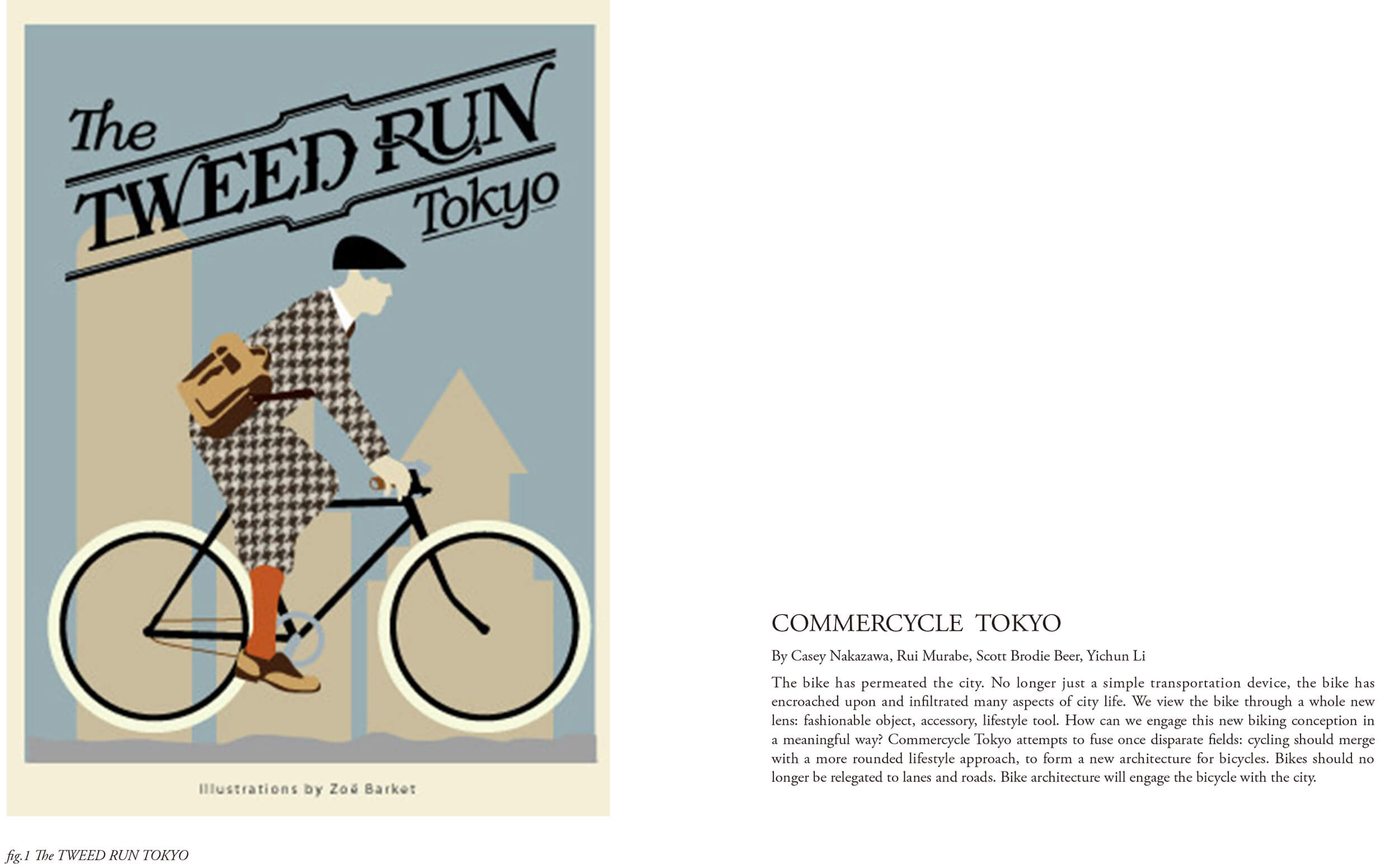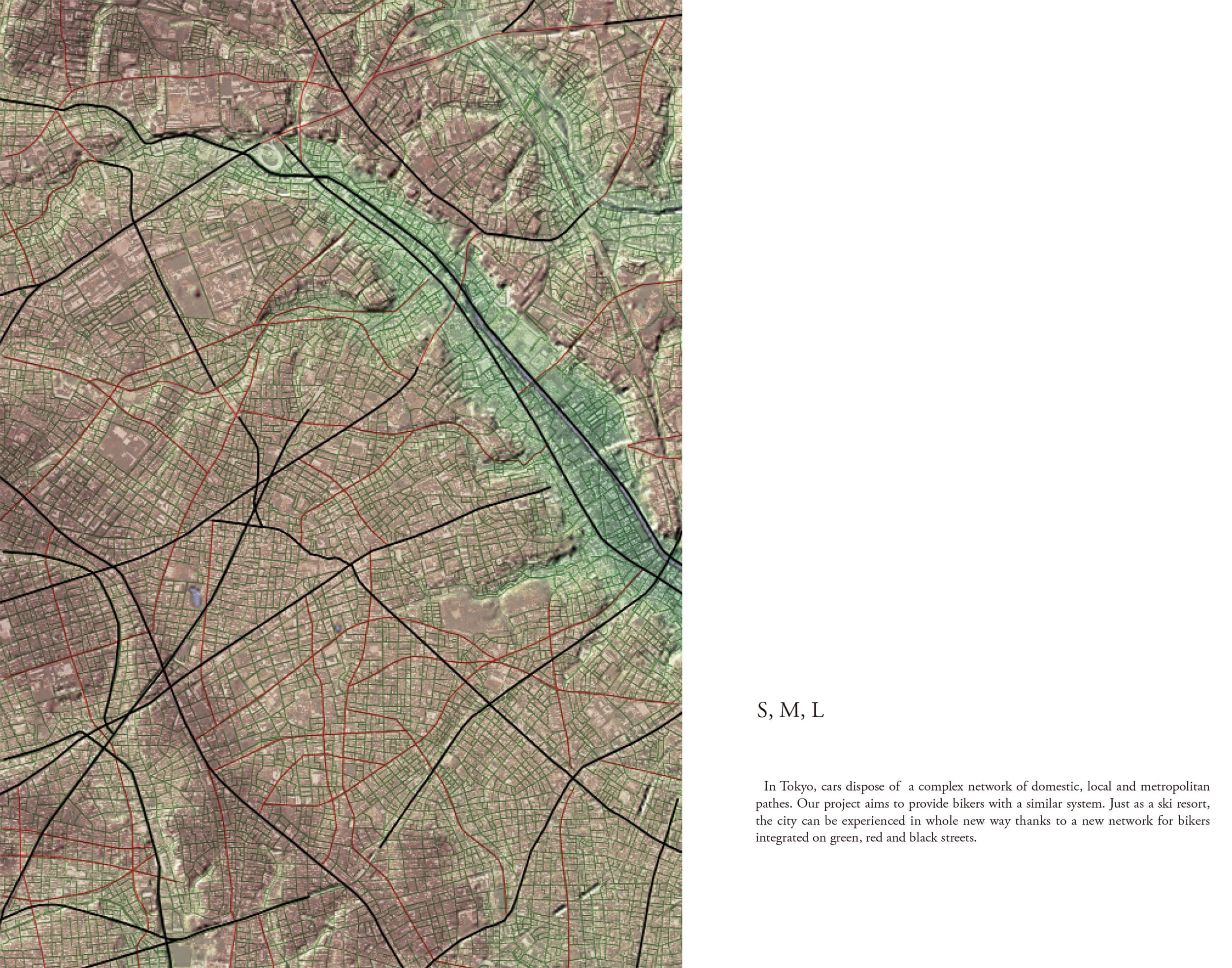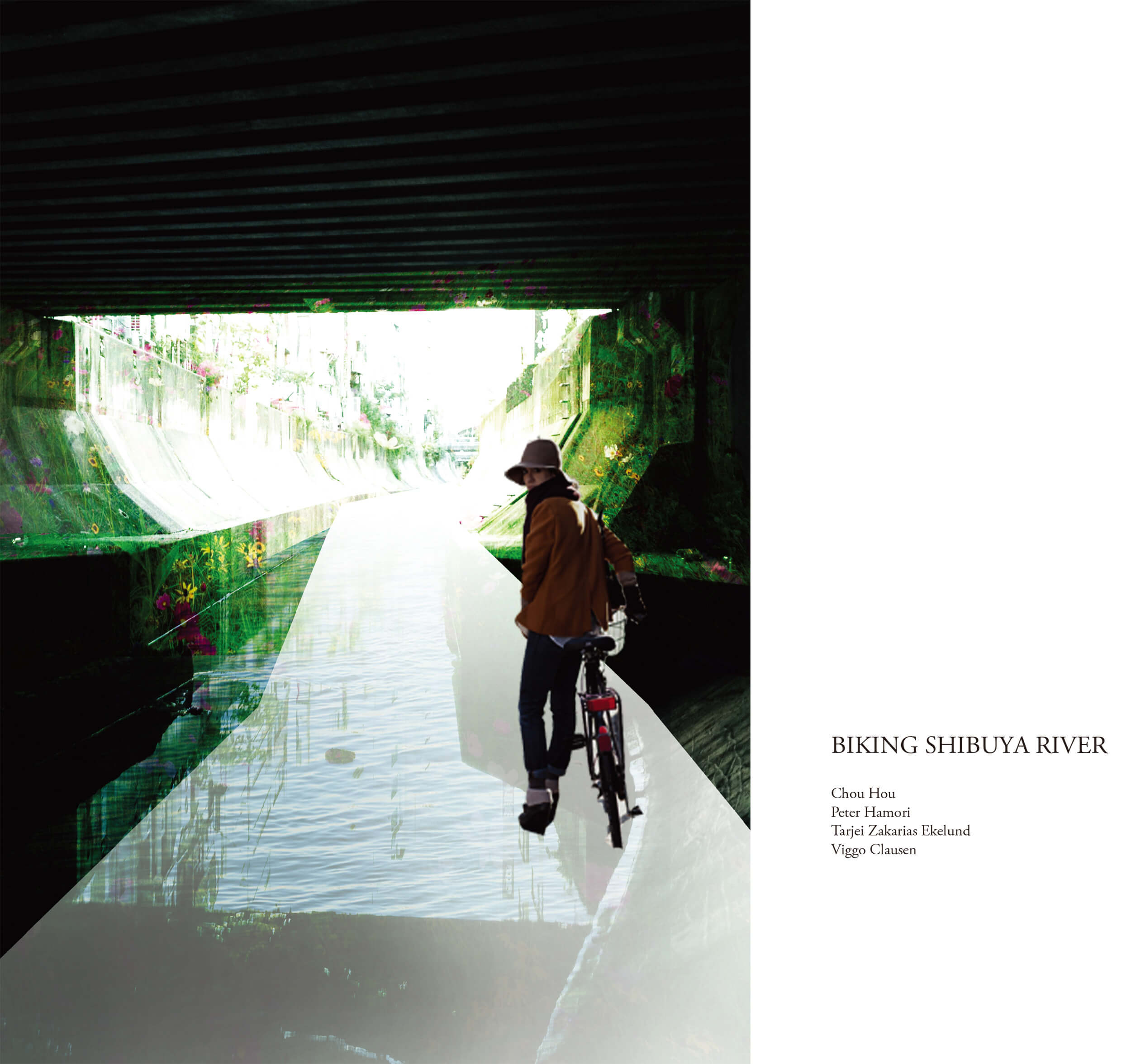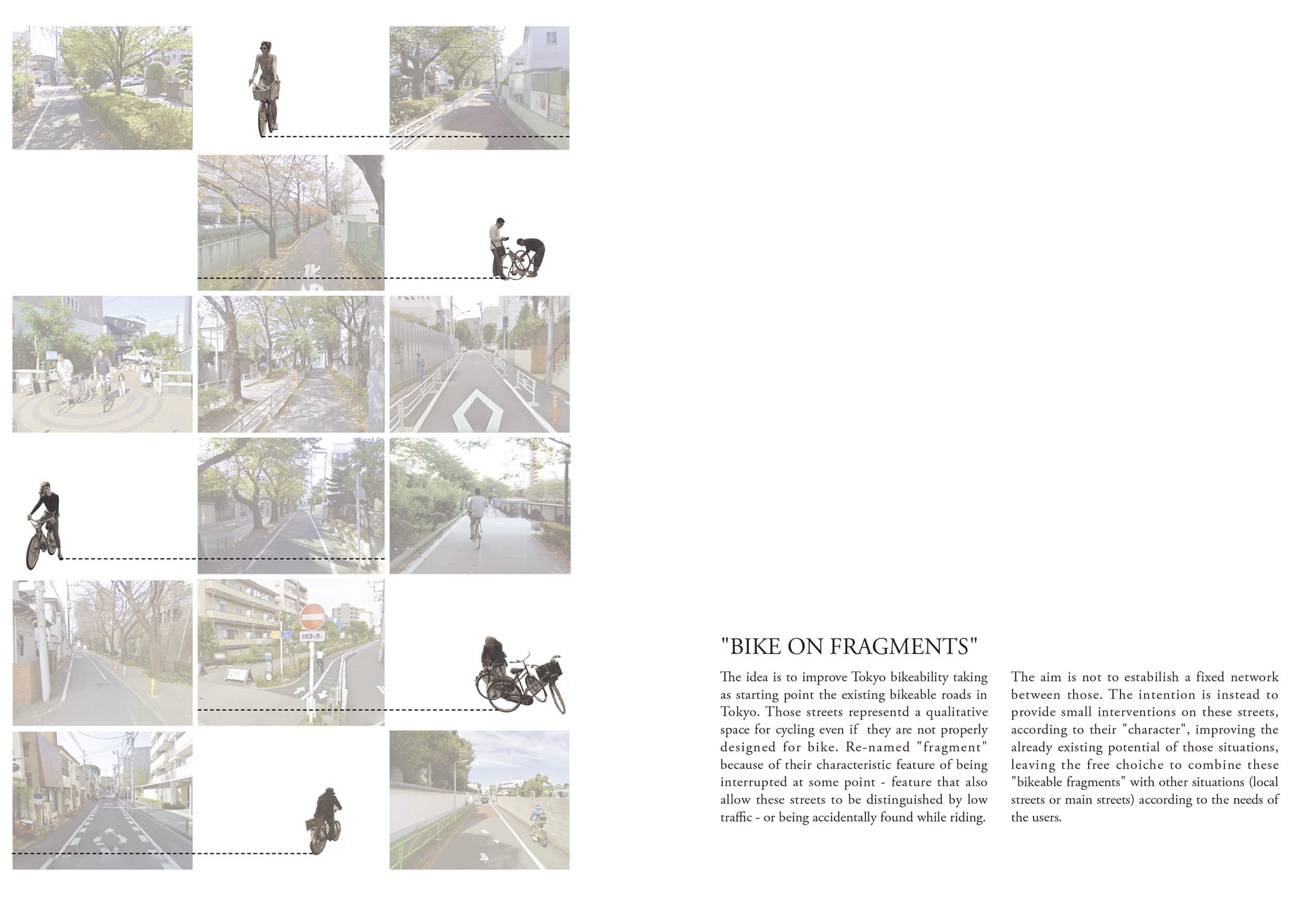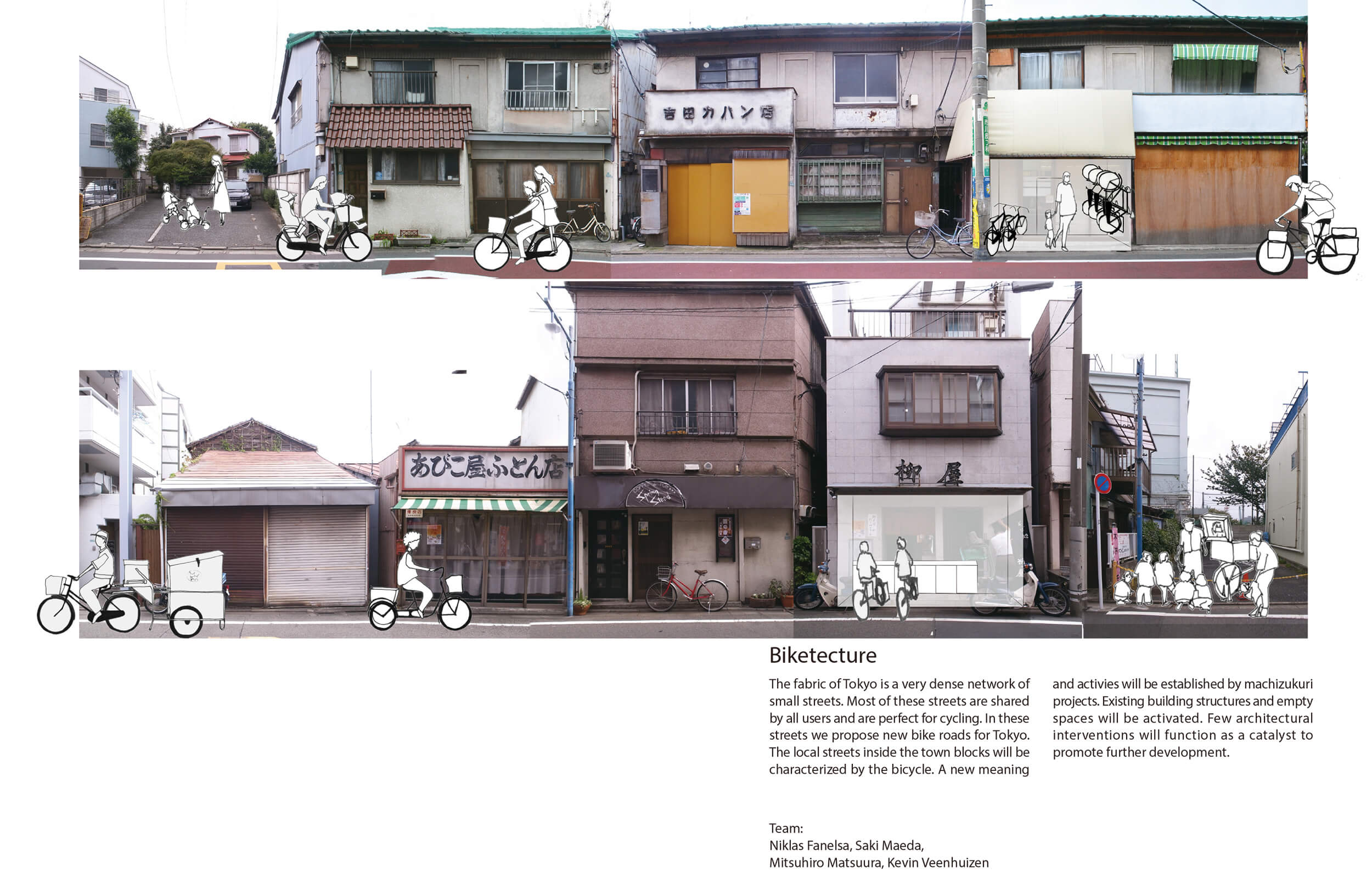The bike has permeated the city. No longer just a simple transportation device, the bike has encroached upon and infiltrated many aspects of city life. We view the bike through a whole new lens: fashionable object, accessory, lifestyle tool. How can we engage this new bilking conception in a meaningful way? Commercycle Tokyo attempts to fuse once disparate fields: cycling should merge with a more rounded lifestyle approach, to form a new architecture for bicycle. Bikes should no longer be relegated to lanes and roads. Bikes architecture will engage the bicycle with the city.
Class Category: 2012_Bike Town Tokyo
S, M, L
In Tokyo, cars dispose of a complex network of domestic, local and metropolitan roadways. Our project aims to hack this system using the bike, and make every street in Tokyo more bikeable.
We first categorized different streets into types. Each type provides a different set of functions. Some are very straight and fast, easy to pursue through the city and others are more lively and narrow. Our goal is not to make all streets the same (as this often happens with bike lanes) but rather to maintain each type’s special character. The picture we had always in mind was one of a ski resort, where different slopes are marked out by different colors that identify very different experiences.
Biking Shibuya River
Our intention for this project was to create a single inspirational intervention, demonstrating both the functional and adventurous aspects of bicycling to people sho usually travel Tokyo by metro, bus or car. This resulted in the concept of adding a bicycle path on top of the Shibuya River, which runs from Shibuya station to Tokyo Bay. With this intervention, we’re able to use a void in the city to create an experience an experience that is unique to bicyclists.
Bike On Fragments
The idea is to improve Tokyo bikeability taking as starting point the existing bikeable roads in Tokyo. Those streets represented a qualitative designed for bike. Re-named “fragment” because of their characteristic feature if being interrupted at some point – feature that also allow these streets to be distinguished by low traffic – or being accidentally found while riding. The aim is not to establish a fixed network between those. The intention is instead to provide small interventions on these streets, according existing potential of those situations, leaving the free choice to combine these “bikeable fragments” with other situations (local streets or main streets) according to the needs of the users.
Biketecture
The fabric of Tokyo is a very dense network of small streets. Most of these streets are shared by all users and are perfect for cycling. In these streets we purpose new bike town blocks will be characterized by the bicycle. A new meaning and activizes be established by machizukuri projects. Existing building structure and empty spaces will function as a catalyst to promote.
